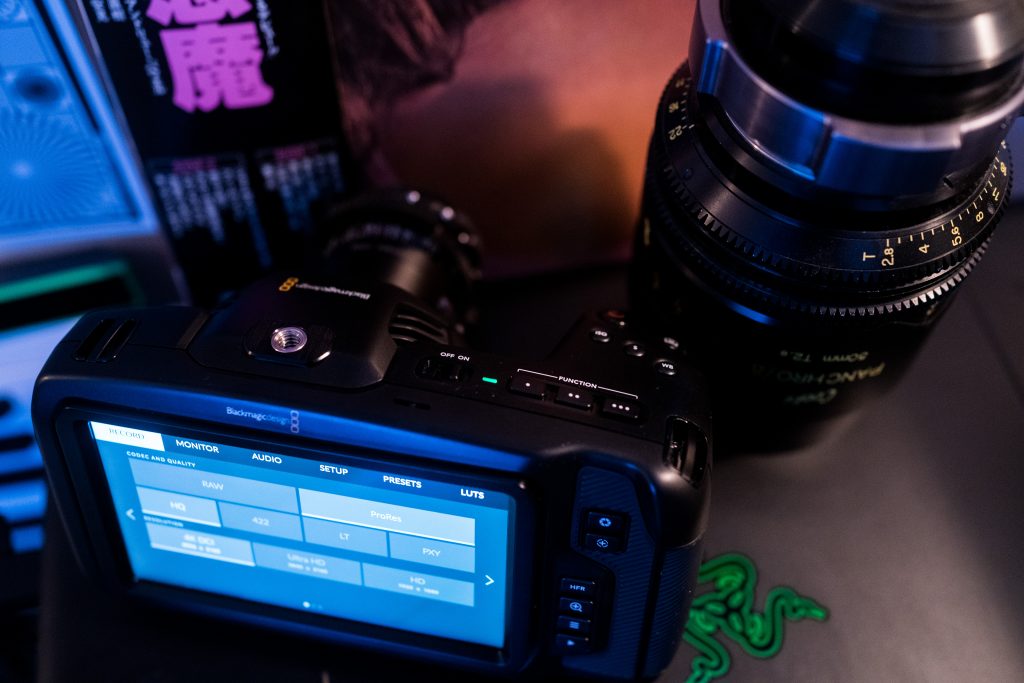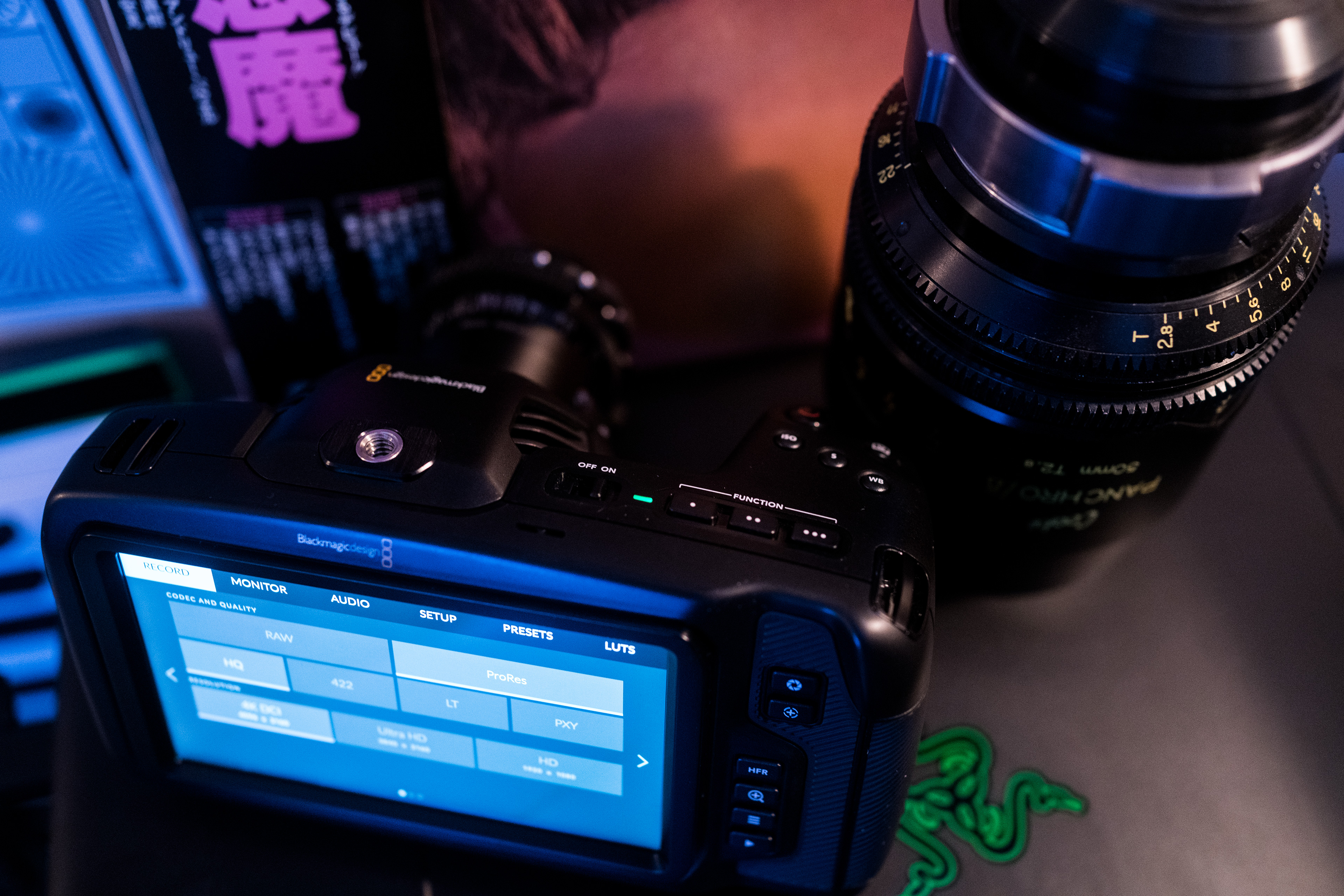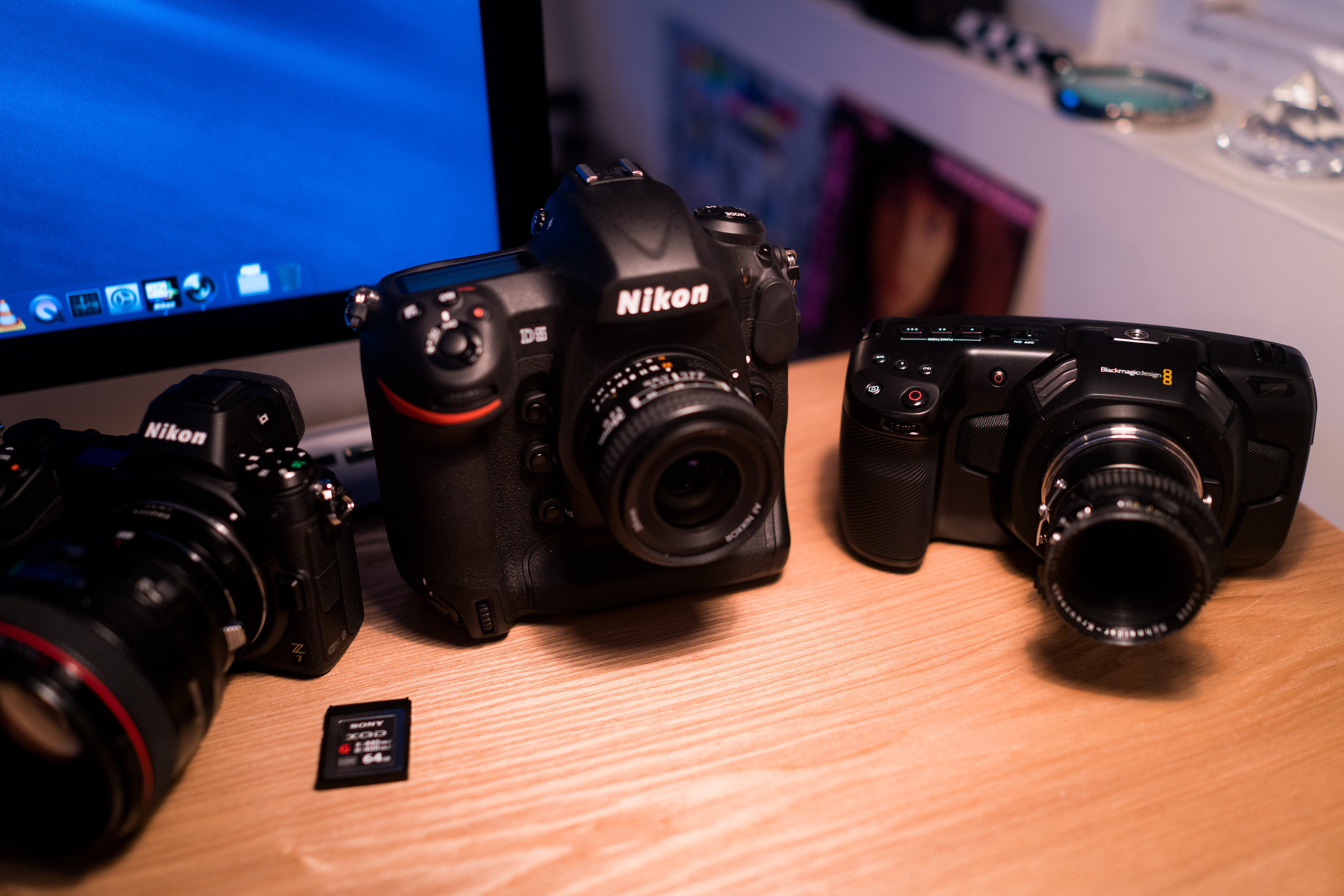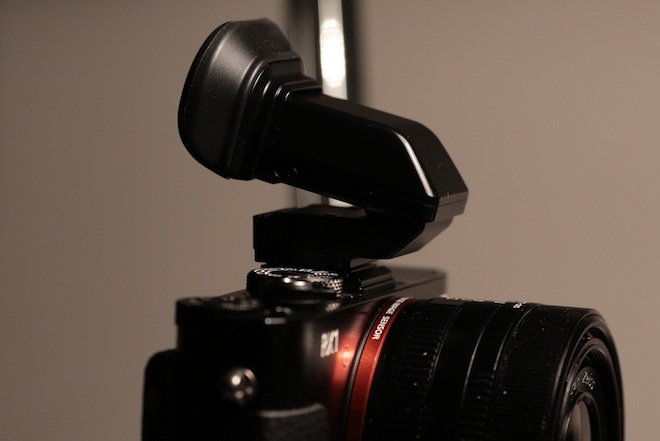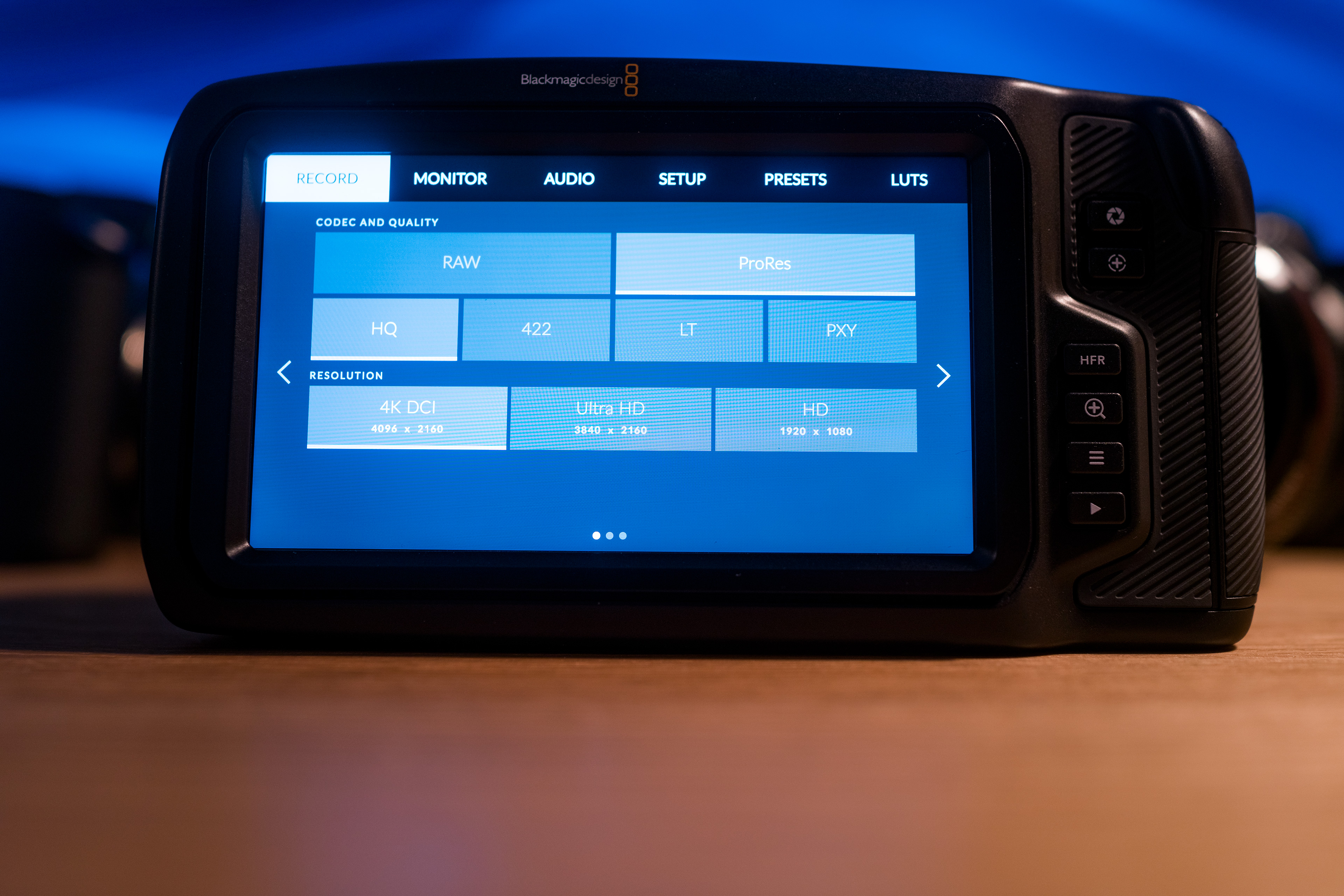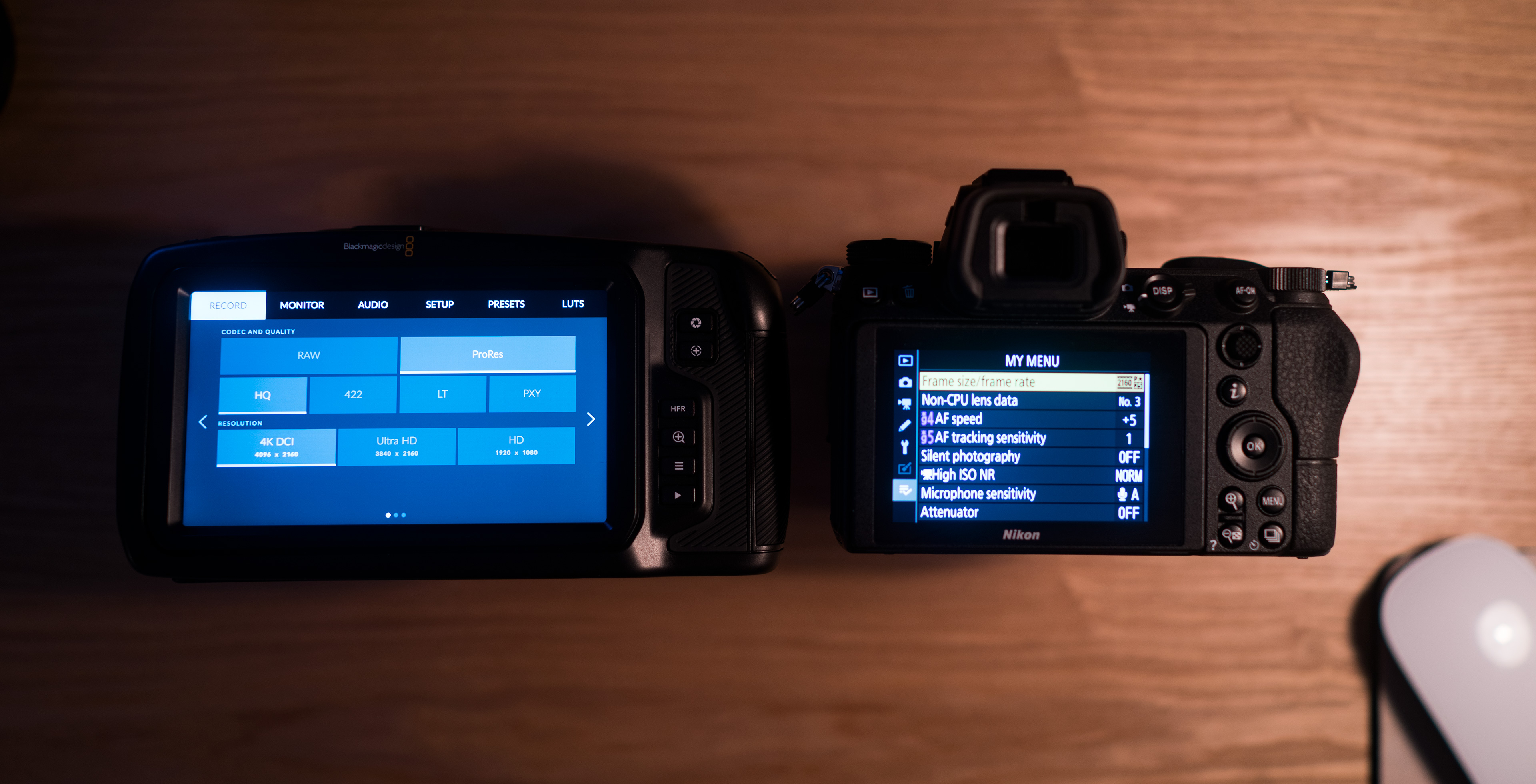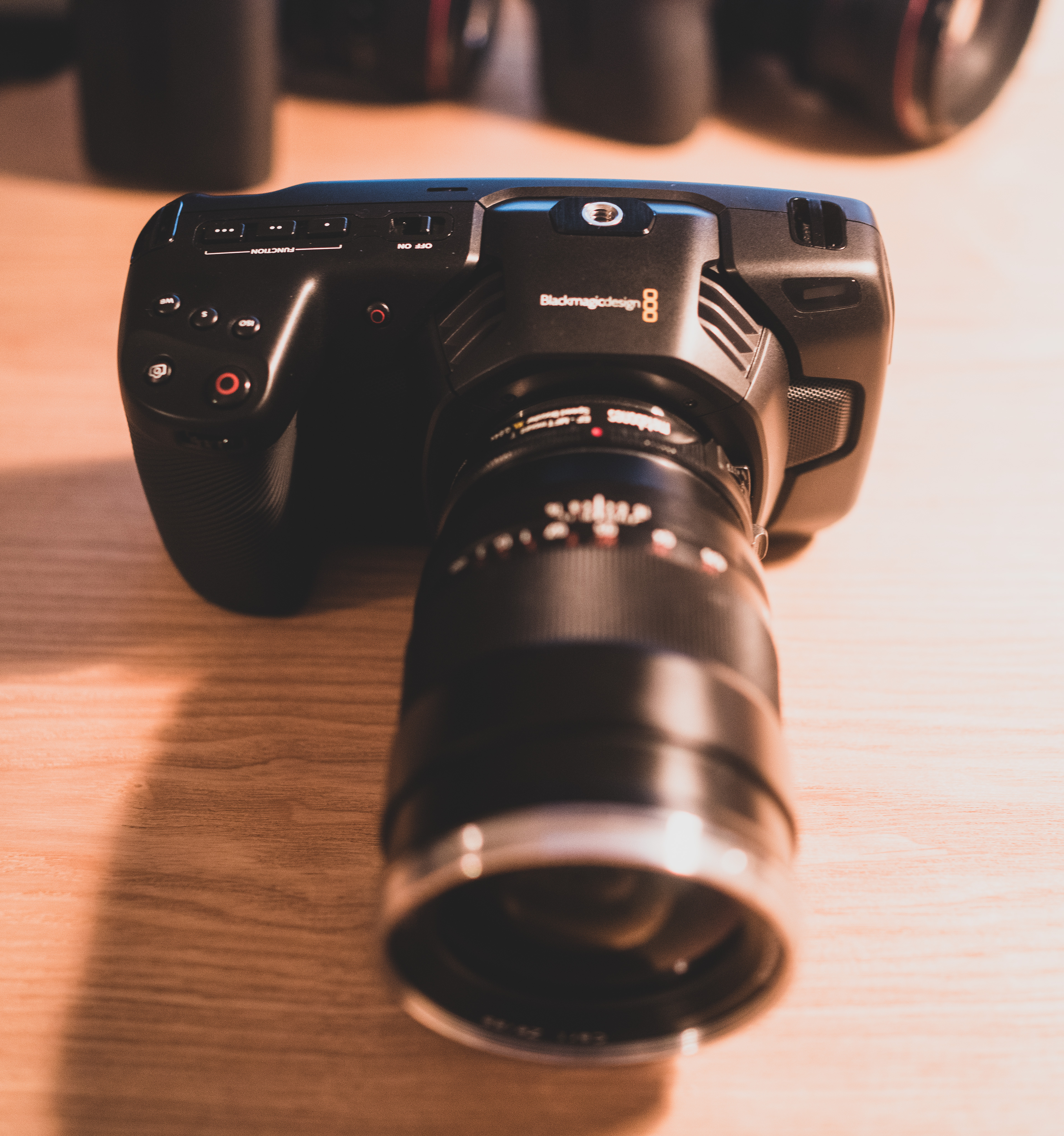
For the first time ever I’ve come face to face with the Blackmagic Pocket Cinema Camera 4K and the Blackmagic Pocket Cinema Camera 4K has come face to face with me. It’s time to face facts without doing an about-face.
I have been taunted by this camera for a long time and I think at one point I felt I actually went certifiably mad. Down the rabbit hole mad. So it begins with a talking white rabbit at NAB holding a Pocket watch (Camera). Actually it may have been Grant Petty but either way, Alice follows the rabbit through a tunnel somewhere in Las Vegas, through which she begins to fall into a never-ending journey from the most anticipated camera announcement of 2018 to the actual shipping. Spiralling down through the darkness she goes, her tiny arms flailing out to catch a shipping notification. Alas OH NO she’s out of luck. She’s only number 12 in the pre-order queue. Finally, she finds her feet and there’s a “Kool Aid” bottle with the label DRINK ME! There’s a big fat YouTube cake with the words EAT ME! Alice becomes a guest at the Mad Hatters YouTube Party for 5 months. At the party everyone is eating cake except for her. “This social media cake is really bad for us” she thinks, “I really do pity you all”.
After a while Alice became tired of being bombarded by riddles at the Mad Hatters YouTube Party where it is perpetually 6pm, time to publish a new video, but make no mistake – the hype artists were right – this camera is a breath of fresh air.
As my favourite Australian Clive James puts it:
“All television ever did was shrink the demand for ordinary movies. The demand for extraordinary movies increased. If any one thing is wrong with the movie industry today, it is the unrelenting effort to astonish.”
Let’s go back to basics… Pure auteur cinema, in a box.
Did you know – Japan spends more on R&D as a percentage of GDP than the US and China? Did you know – Japan still can’t give us a proper raw codec? Or even ProRes on a mirrorless camera? What editing software comes with your GH5? That’s right – None! Finally when it comes to common sense (a larger screen than 3.2″ perhaps?! Load your own LUTs in-camera?!) Blackmagic have married simplicity to power in a matter-of-fact way so well, you want to marry it. Take high-frame rate recording on a Sony RX100 4,5 and 6. Please. Take it. I always thought it was quite simple. HFR button. You press it. Eh, that’s it. Not a big dialogue box over the shot waffling on about pre-cache lock-up mode garbage and by the way no correction to the UI in 3 generations of cameras! On the Blackmagic Pocket 4K one press toggles the frame rate between 24p and 60fps or 120fps and back again. Logical. Simple. Obvious.
The Pocket 4K is extremely comfortable in the hand. I am not as put off by the size, or the build quality. No, it doesn’t have the alloy trimmings of the first Pocket Cinema camera or the beautiful styling of a Fuji X-T3 but the polycarbonate is lightweight, practical and flowing with no sharp edges. No fiddly areas. The chunky grip is great. The neatest trick is the width and size of that back screen. It makes for a chunky and confident camera in the hand. You know when it’s in focus. As an added bonus the extra width of the camera is put to good use with the HUGE stereo mics on the front either side of the lens mount. It isn’t significantly wider than some of the larger DSLRs or mirrorless cameras, as you can see the D5 is overall a much larger and heavier camera.
And the smaller mirrorless cameras feel too cramped.
You can live in that screen all day long and truly revel in the picture. Although a tilting mechanism should, in my opinion, have been added, Blackmagic have always encouraged a more modular approach to the Pocket. The temptation is to add a lot to it. Sure, feel free to rig it up in any way you please. One thing I REALLY miss though – is a small built-in EVF. I reminisce over the days of tiny, slim mirrorless cameras with crisp, sharp EVFs – like the old Sony NEX 7. A big fat loupe over the LCD isn’t ideal because so much of the settings are on the touch screen. An expensive Zacuto Gratical feels like overkill on a small camera and leads to yet more wires and stuff to be bothered about. So it would have been great if the Pocket 4K had a smart hotshoe on top for a small camera-powered EVF like the Leica Visoflex EVF 2 or the Sony EV1MK.
The Leica Visoflex is just £300 which is practically a give-away by Leica standards, so I am sure Blackmagic could make money on a similar accessory for the same price and have a lot of takers.
The Sony EVF was for the original RX1 (below).
Powering the beast
Although you can pop a Canon battery in it, the professional battery solution I recommend is the CoreSWX Powerbase EDGE. $264 from B&H (£218+ tax in the UK at ProAV or 260 euros + tax in Europe).
It’s surprising how few batteries there are that are so simple to rig up. No rails and cage required, the simplicity of the Powerbase is that you just have a quick release plate on the battery and put the camera on top. At the same time it’s a v-lock battery so you can use it on the back of your more traditional setup as well. The reason I am going this route is because the battery compartment of the Pocket 4K is known to jam – numerous reports so far. That coupled with a short run-time per Canon LP battery of around 40 minutes, makes it too much of a risk during an important shoot to even bother with the LP batteries at the moment.
The Blackmagic Pocket 4K version of the Powerbase comes with a Canon LP adapter so that the wire from the d-tap goes into the base of the Pocket 4K rather than into the DC port on the side, which would be easier to knock.
I’ll bring you a full review of the Powerbase once I get mine, and I’m expecting a good few hours per charge. It remains portable and small enough to fly and travel with (under the capacity regulations).
Now here’s a screen we should have seen on the GH-series of cameras for a LONG time:
When the Pocket 4K also gets the update for BRAW this screen is going to get even better. The image quality of RAW with the smooth playback and smaller file sizes of ProRes.
Now, as mirrorless camera shooters we have put up with H.264 for a long time and only recently have we seen 10bit get more common. Aside from Magic Lantern with their brilliant 14bit RAW on Canon DSLRs, we’ve recently been graced with 10bit in the form of H.265. What I generally find is that even at high bitrates the shadows go blocky, because the encoder seems not to prioritise darker, less detailed areas. They are very CPU intensive codecs as well. Even with hardware acceleration a lot of people still struggle to edit 10bit 4K 60p H.265 (IPB). At least ALL-I is easier on the system but the file sizes are not. At the typical 400Mbit on the Canon EOS R, Panasonic GH5 and Fuji X-T3, file sizes are almost as heavy as 4K MJPEG. So it’s good to see ProRes LT and Proxy on the Pocket 4K camera as well for when space is a premium, rather than the very high-data-rate RAW and ProRes HQ options.
The touch screen implementation on the Pocket 4K is the best I’ve ever used. None of the Japanese mirrorless cameras have this right. They don’t have enough screen real-estate to use big chunky UI elements. It is stylus era anti-Apple design. Here in Blackmagic land it is 2018.
The dual-card slot is another thing I like here, because it not only protects from failure, but allows us to use SD card as well as CFast. If this was a CFast only camera it would make a lot of people’s perfectly good UHS-II cards redundant. For less than £70 I can buy a 64GB with 290MB/s write speed. That is almost SSD / XQD speed.
The LUT feature of this camera is fantastic. On quite a lot of cameras with flat or LOG gamma curves they make you compose off that horrible image, record off that horrible image and even play back that horrible image to your clients or collaborators. I love that on the Pocket 4K, you can press a function button to instantly toggle between any LUT of your choice or the BMD film gamma (LOG) image. You can even bake that LUT right into your ProRes recordings. Again this is something I have wanted for so LONG. Just a simple thing like that is wonderful for a quick-edit.
The processing power in this camera is simply extraordinary. To take that RAW sensor data at 4K/60p, apply a LUT, encode ProRes or compute Cinema DNG lossless compression, as well as feeding that huge screen and two extremely high-speed cards generates heat and explains the short battery life vs the competition. The fan inlet on top and the outlet on the base acts as a nice hand-warmer but it’s thankfully a very modest fan, not noisy and the only downside is that you’ll need to use a rain jacket in terrible weather. I think in poor conditions I’d sooner do video on my Canon 1D C or Nikon D5, but for the price and the party going on under the hood I don’t begrudge the Pocket 4K’s preference for calm interiors, sunny days and absolutely no sand under any circumstances.
Now allow me a moment while I get my calculator out. It’s Speed Booster time. The Ultra 0.71x fits, apparently. I just tried my more extreme XL 0.64x as well and it fits! The cutout in the mount is almost exactly Speed Booster XL shaped. I am really glad they thought of Mr Metabones here. 1.86x crop times 0.64x is 1.2x crop. That is a significantly larger view of your full frame lenses than Super 35mm. It is close to full frame. If you remember the old Pocket camera, you could just about get the Super 35mm look out of a Super 16mm sensor. The Pocket 4K becomes a light cannon with the Speed Booster XL – we’re talking F0.89 for your F1.4 lenses. BOOM! I can put a Canon 50mm F1.2 on there and shoot F0.76 in low light on a camera that easily handles ISO 12,800 in RAW with the noise reduction added in post. RAW gives low light a big additional boost because noise plays merry havoc with compression. Without the compression of H.264 and with all that shadow information maintained, the Pocket 4K is a contender for the best low light camera of the year when coupled with a Speed Booster. By the way, the camera reports the physical aperture of the lens so F1.2 not F0.76 on-screen.
On the top panel we have 3 programmable function buttons and dedicated buttons for ISO, shutter speed and white balance. Correct me if I’m missing something but the Auto WB feature does not automatically adjust on-the-fly like a mirrorless camera. You have to go into the WB menu each time and tap Auto WB, then it will set the white balance for the scene. Or you can tap a preset. On the one hand this prevents unexpected shifts during a recording. On the other hand if you are moving around between sun and shade or interiors a lot, it is not going to do a smooth transition and will require manual intervention each time. In RAW this isn’t a problem as white balance is done in post. In ProRes it is going to be interesting to see how I get on with that very basic Auto WB implementation.
Autofocus is not a priority for this camera and you will be using it in single-shot mode to frame up and confirm focus. I have not had it working with my Canon EF lenses yet through the Metabones Speed Booster. With most Micro Four Thirds lenses it is pretty basic but does at least work.
So that’s my first hour with the camera.
By no means is this a full review and there are limitations – obvious ones like the features lacking that a GH5 packs in – anamorphic, IBIS, EVF, articulated screen, long battery runs, and so on.
The image is what this camera is all about. Stay tuned for when I have shot something with it.
The Pocket camera has been bought out of my own pocket! Thank-you Mourad at Foto Meyer in Berlin for finding me stock, without having pre-ordered, and my girlfriend for shipping it to me in England.




